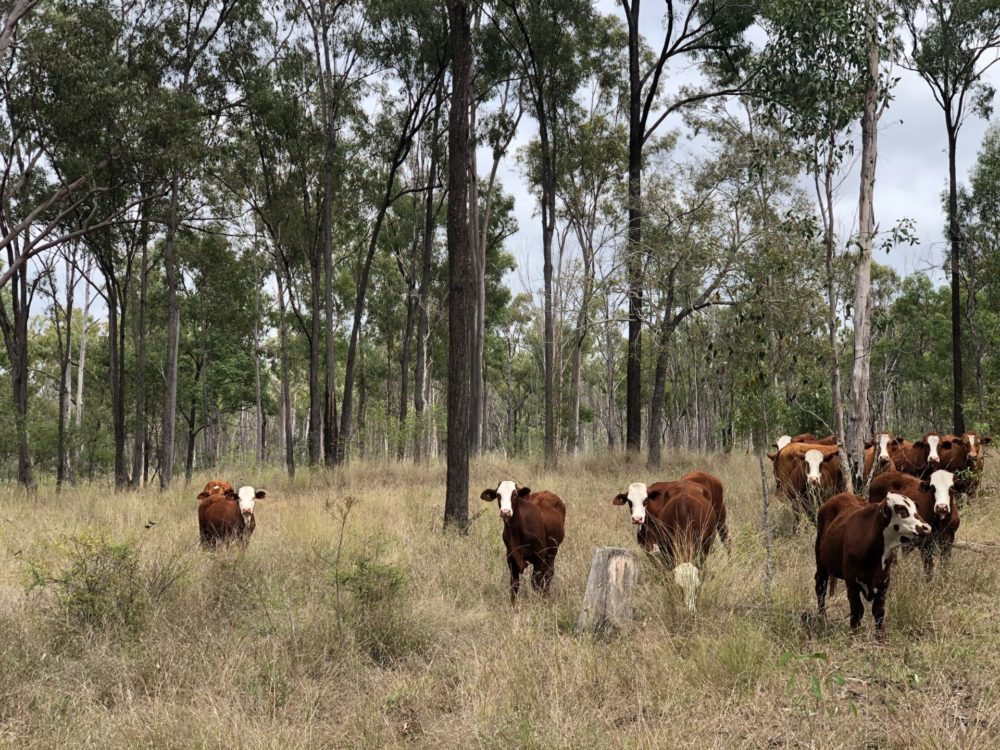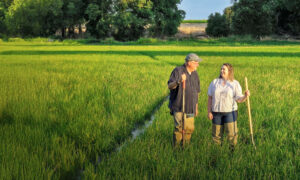Editor’s note: John Fargher is co-founder and chief revenue officer at AgriWebb, a provider of management software for cattle and sheep farms based in Sydney, Australia. The views expressed in this article represent those of the author.
Regenerative farming has often been a controversial topic – largely due to confusion regarding its true definition. Some believe that it involves a return to pre-industrial farming techniques, and fear it’s about pursuing sustainability instead of profits.
This is simply untrue. In fact, the term was popularized in the US by an organic farmer as an alternative to the rather limiting label of ‘sustainable farming.’
Regenerative agriculture, at its simplest, puts land management at the center of a farming enterprise. It’s about leaving the property you farm in better condition than you found it. From my personal experience, our family has been doing this for generations on our South Australian pastoral station in the northern Flinders Ranges. For decades, we have focused on flora and fauna pest eradication, reducing soil erosion, resting paddocks for long periods of time, and actively regenerating native plant growth.
Today, many of regenerative ag’s principles are more easily applied thanks to the development of new technology.
First, it’s key to understand why regenerative farming is important and why it deserves our attention. The gross value of Australian agriculture in 2018-2019 was $62.2 billion, according to the country’s National Farmers Federation. This is no small figure; farming is a significant contributor to our economy, yet the strength of our agricultural productivity and success relies largely on the health of our land.
Soil health is a core concern for practitioners of regenerative ag. Soils that are structurally sound, rich with organic matter, and alive with microorganisms can better retain water and store carbon.
There’s further data to support regenerative farming. US researchers from the Ecdysis Foundation investigated how the move to more regenerative systems might affect profitability. After reviewing 20 farms based on their implementation of regenerative ag practices, the researchers found they were 78% more profitable than conventional plots. This increase in profitability was the result of two main factors: input costs and end markets.
In terms of input costs, regenerative practices greatly reduce expenditure on fertilizer. Also, when it comes to selling to the market, farmers are able to receive higher premiums for their produce. These are mainly short-term benefits; the long-term benefit is healthier soil for years to come.
As farmers manage about 51% of the Australian landscape, it is vital that we educate the industry, our colleagues, and consumers on the importance and benefits of regenerative agriculture.
So what does regenerative farming entail – and is it likely that you might already be doing it?
The basic tenets of regenerative ag are an emphasis on rotational grazing, a reduction in chemical use, minimal tillage, and a focus on tree planting. These methods all help to maintain the landscape and reduce erosion, increase biodiversity, and increase animal health and welfare. Ultimately, they allow you to gain maximum value from the land for years to come.
In the US, Cargill and the Soil Health Institute teamed up recently to find out if there’s a business case for soil health systems. Read more here
However, if the above just resembles common sense and good practice, it is possible to go further. With the addition of technology, the principles of regenerative farming can be enhanced.
Soil monitoring can be managed via probes and remote imaging techniques that provide up-to-date pasture analysis, giving farmers more knowledge about the condition of their land. This allows them to optimize inputs and reduce their use of chemicals.
For example, with tech tools like those offered by Sunshine Coast-based startup Cibo Labs, farmers can use remote sensing and artificial intelligence — combined with on-farm knowledge — to bring new levels of understanding to pasture productivity.
Additionally, developments in farm machinery — such as controlled traffic systems and precision-guided seeding — can reduce soil damage. Variable-rate application of fertilizers and pesticides, based on collected data sets, can lead to a substantial reduction in chemical use.
Underpinning the whole process of tech-enabled, everyday farm management are software platforms such as AgriWebb. In the case of supporting regenerative farming, these platforms bring together the data from your property to allow more efficient use of resources, meaning less impact on the environment. They also make it simple to manage and assess more complex grazing systems, such as rotational grazing, which may be a part of your regenerative farming practices.
Whether you’re already doing it, investing in it, or still weighing up the options, regenerative farming practices are vital for a sustainable, productive, and profitable future. By using the right technology and properly applying the correct methods, regenerative farming can unlock a whole range of benefits – both short and long term.




